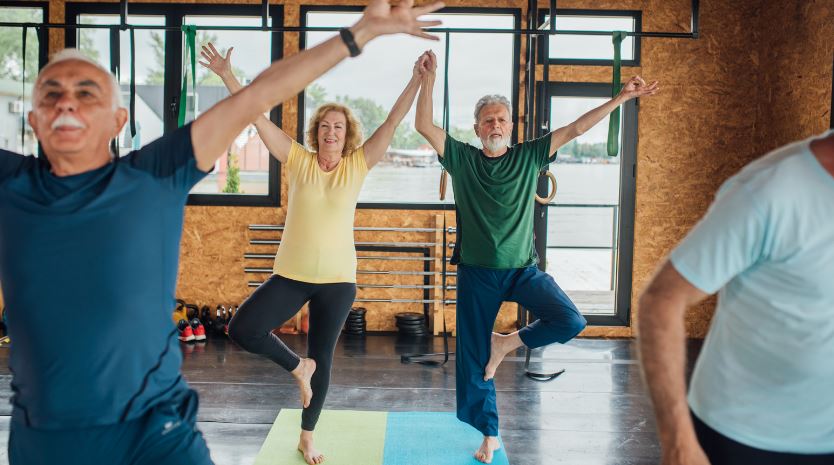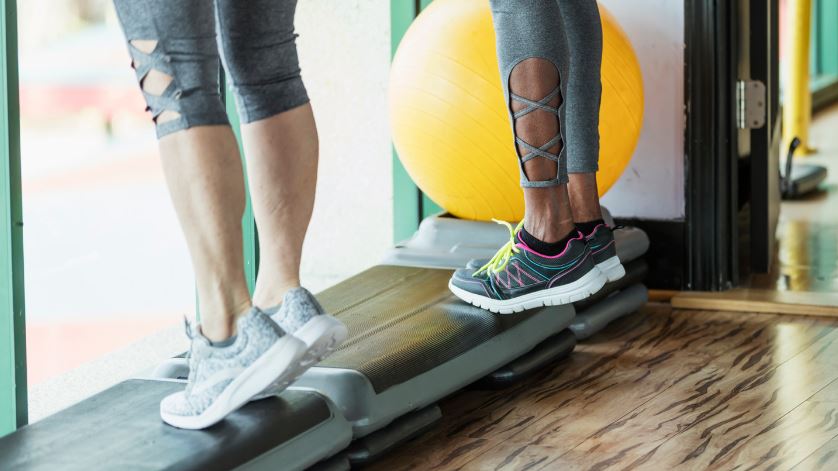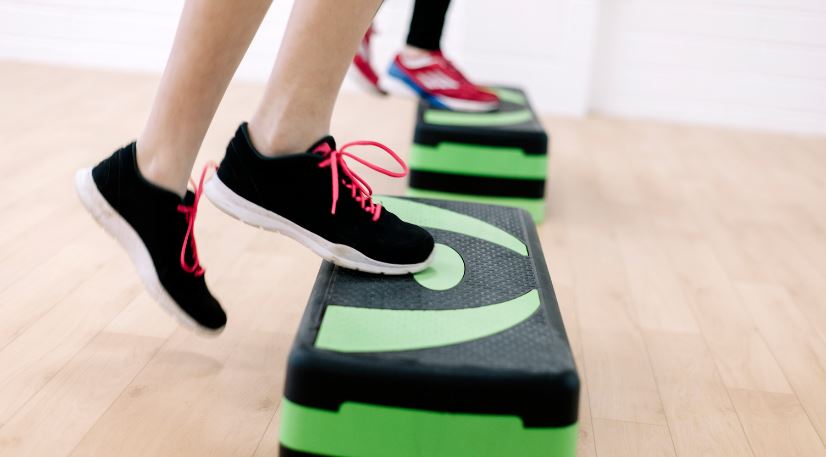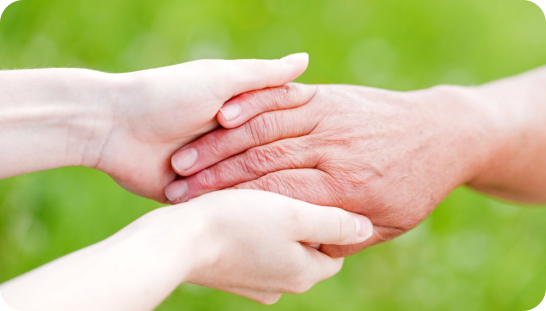10 Knee Strengthening Exercises For Seniors That Work Wonders

With age, the muscles in our body tend to deteriorate. But there’s a solution. Strengthening these specific muscles is key to reversing the effects of aging as it promotes better balance and joint stability. Proper knee movement is essential at both high and low levels of activity, so strong knee muscles are obviously a priority for seniors who walk or exercise.
Getting old doesn’t mean you have to slow down on participating in various activities or events; as long as you take care of your body and keep it strong, you’ll remain healthy and useful for many years ahead.
This guide will show you how to strengthen your knees and the benefits of doing so.
Common Knee Problems in Older Adults
Seniors are more prone to knee injuries and diseases since they naturally lose their younger years’ flexibility, strength, and balance. As a senior, you’ll want to be extra careful when doing your daily activities or engaging in sports to prevent complications. The following are some common knee problems among seniors:
1) Osteoarthritis
Also known as degenerative joint disease, osteoarthritis causes inflammation and deterioration of the cartilage in a joint. Cartilage is a rubbery substance that covers the bones in your joints, cushioning them and allowing you to move freely. When cartilage starts to deteriorate, it causes pain and decreased mobility.
The best way to strengthen your knees against osteoarthritis is to do exercises that increase the strength of your quadriceps muscles on both sides of your legs. The quadriceps are responsible for straightening your knee when you walk, run or stand up from sitting down. Strengthening these muscles can help lessen the pain associated with osteoarthritis because they support the knee’s structure during weight-bearing activities like walking or climbing stairs.
2) Tendonitis
It is an inflammation of the tendon. It can cause pain and stiffness in the joint. Tight muscles or poor posture can lead to this condition. Tendonitis is common among athletes who overuse their knees. Weak knee muscles can also lead to this condition.
Treatment of knee tendonitis requires adequate rest and stretching exercises to strengthen and lengthen the muscles across the joint. Stretching will enable you to regain your range of motion and flexibility.

3) Sprains
A sprain is when a ligament is damaged. A ligament is a strong band of tissue that connects two bones together. Sprains can happen when there’s excessive force on the joint, such as an awkward twist or fall.
If you have an overused knee joint, it’s best not to stretch your muscles. Stretching can cause further damage as it puts undue stress on the tissues and ligaments nearby. Take a break from any strenuous activities until the pain and inflammation subside. If your pain becomes unbearable, it’s time to visit a doctor for a professional opinion.
10 Exercises to Strengthen Your Knees as You Age
Engaging in physical activities is the best way to improve your overall health, including your knees. It’s been proven that seniors who participate in a variety of physical antics and exercises have more strength, healthier bones and muscles, more endurance, and better balance compared to those who are less active.
1. Knee Extensions
Knee extensions are a great way to warm up, stretch, and strengthen your quadriceps and hamstrings. They can help improve your balance, too.
Here’s How To Do It:
- Sit in a chair and place your feet flat on the ground.
- Keeping seated, raise the right leg from the ground and extend it out in front of you.
- You will feel your thigh and quad muscles contracting. Hold for five seconds, then lower back to the ground.
- Switch and raise the left leg. Hold, and return to the neutral position.
- Repeat for 10 counts on each side, up to 3 sets.
2. Knee Flexion (Standing)
Knee flexion is another knee exercise that stretches and strengthens the hamstring muscles. These exercises are easy to perform and help improve your balance and lower body strength.
Here’s How To Do It:
- Stand on a two-inch board or small step, and start standing with a chair in front of you to hold on to.
- As if you are trying to stand on one foot, raise the right foot from the ground, bending it back behind you at a 90-degree angle or the farthest angle you can.
- Straighten the leg back down to the neutral position. Repeat ten times.
- Repeat the routine on your left leg ten times.
- Do up to three sets on each leg.
3. Calf Raises

These exercises help your supporting muscles in the calf and back leg, taking less pressure off the knee when walking and standing. Calf raises can be performed by rising on your tippy-toes and then gently lowering the heels to the ground. You can challenge yourself further by doing the following steps:
Here’s How To Do It:
- Begin by standing on a step or a workout stool. Ensure you have something to hold onto to support balance. Let the back of the heels hang slightly off the surface’s edge.
- Rise on your toes, allowing the heels to come up. You will notice your calf muscles flex.
- Gently lower back down, allowing the heels to go a little lower than the surface you are standing on. You will feel a subtle calf stretch.
- Repeat ten times for up to three sets.
4. Wall Squats:
Wall squats are a great exercise to improve balance and strengthen your quadriceps, hamstrings, and calves. You will also improve your posture. If this routine causes joint pain, stop and try a different routine.
Here’s How To Do It:
- Begin standing with your arms at the sides and your back straight against the wall.
- Keep your back against the wall, and gently lower yourself by bending your knees. Keep the feet and knees aligned, feet shoulder-width apart. Also, ensure the back and pelvis are aligned.
- Hold the contraction for four to ten seconds. You will experience a muscle burn.
- Keeping your back to the wall, slowly rise to a standing position.
- Repeat the routine ten times, up to three sets each day, depending on your fitness level.
5. Straight Leg Raises
Straight leg raises are an excellent beginner’s choice to try if you want a knee exercise that will not strain the leg muscles. This activity builds strength in the hamstrings and quads, which support the knee’s mobility.
Here’s How To Do It:
- Lie on your back on the ground
- Bend one knee and place the foot flat on the ground or floor
- Keeping your other leg straight, gently raise it to the height of the opposite knee. You will feel your muscles working to lift it.
- Lower your straight leg back to the ground. Repeat the routine ten times.
- Switch legs and repeat on the other side.
- Complete up to 3 sets.
6. Side Steps

Side steps are perfect for those with limited mobility in the knee. They focus on the hamstrings. These exercises build your strength, balance, and stability – all of which help you stand and walk more comfortably.
Here’s How To Do It:
- Stand in a neutral pose with feet hip-width apart.
- Step to the side with the right leg, so your legs are wide apart.
- Then bring the left leg next to the right.
- Do some reverse: Step to the side with the left foot, then bring the right leg back in.
- Repeat ten to twelve times for up to three sets.
7. Step Ups
Step-ups work the quadriceps, glutes, and hamstrings. You may need to do these exercises in a step-up box if you are a beginner.
Here’s How To Do It:
- Stand on the edge of the step box or raised platform. If you need help balancing, you may ask an elderly companion to help spot you or use a chair for support.
- Step up onto the step box with the right leg, then the left.
- Step back down with the right leg, then the left.
- Repeat the routine ten to twelve times for up to three sets. On every other set, begin with the opposite leg.
8. Squats with a Chair
This routine is excellent for improving your balance, increasing leg strength and endurance, improving your knee range of motion, and your self-confidence.
Here’s How To Do It:
- Put a chair behind you, and stand with the feet slightly wider than shoulder-width apart.
- Hold the back of your chair for balance.
- Keeping the heels on the floor, lower yourself down gently by bending at your knees until the tops of the thighs are about parallel to the ground.
- Touch the chair lightly with your bottom, hold for 5 seconds, and gently rise by straightening the knees.
- Repeat ten times.
9. Side Leg Raises
Side Leg Raises work your hip abductor muscles and the glutes. The hip abductor muscles, located on the outside of the hips, help you stand, walk and rotate the legs easily. Strengthening these important muscles can help prevent and treat pain in your hips and knees.
Here’s How To Do It:
- Lie on the side with the legs stacked on top of each other. Cradle the head in your hand, and put your other hand on the ground or floor in front of you.
- Raise the top leg as high as you can. You must feel this on the side of the hips.
- Briefly pause at the top, then lower your leg.
- Do two to three sets of ten repetitions for each leg.
10. Bridging
This exercise is ideal for strengthening muscles around your knees and hip, vital in walking and step climbing, squatting, and bike riding. Bridging exercise will also mobilize the hips to reduce stiffness.
Here’s How To Do It:
- Lie on the back with your knees bent and feet on the ground and floor.
- Tighten the abdominals and pelvic floor muscles. Press into your feet and lift the hips a few inches from the floor.
- Keep the shoulder blades in contact with the supporting surface.
- Tighten the buttock muscles as you gently lower your hips.
- Repeat.
Protecting Your Knees During Exercise
Before you embark on any exercise program, there are things you need to consider:
- Warm up before exercising: A warm-up will help you avoid injury and prepare the body for the physical demands of exercise. An ideal warm-up should be a slow start to the exercise session, gradually raising your heart rate, range of motion, and stretching. Practicing the routine you would like to do one way to warm up your joints and muscles before exercise.
- Ask your doctor: Before starting any exercise program, help your aging loved ones prepare for a doctor’s visit to ensure no health conditions would prohibit you from exercising. They can also recommend an ideal conditioning program.
- Start slowly and build up: If you have not been active for some time, begin slowly and build up to the type of exercise you want to do over a period of several weeks.
- Proper Form: Whether doing cardio-based exercises or strength training, proper form is important in preventing injury.
- Listen To Your Body: If you feel pain, stop exercising immediately and seek immediate medical attention.
Final Thoughts
There are lots of knee strengthening exercises that can help you to improve your knee strength and mobility. Some of these exercises are simple and easy, while others require more effort. In any case, the benefits will be well worth the effort! The exercises mentioned above are just a few of the many that can help you strengthen your knees.
However, it is important to consult a doctor before starting any exercise program to ensure that you are healthy enough to begin an exercise program and that the exercises you choose are suitable for your needs.
If you worry that you might not be able to accompany your loved one in their exercise, don’t worry; hiring a reliable caregiver is an option. Serenity Senior Care has a team of caregivers available to provide companionship and assistance with any exercise program. Our caregivers can help you or your loved one with their exercises and provide other types of care if needed. If you’d like more information about our services, give us a call today at 73-338-0124.


